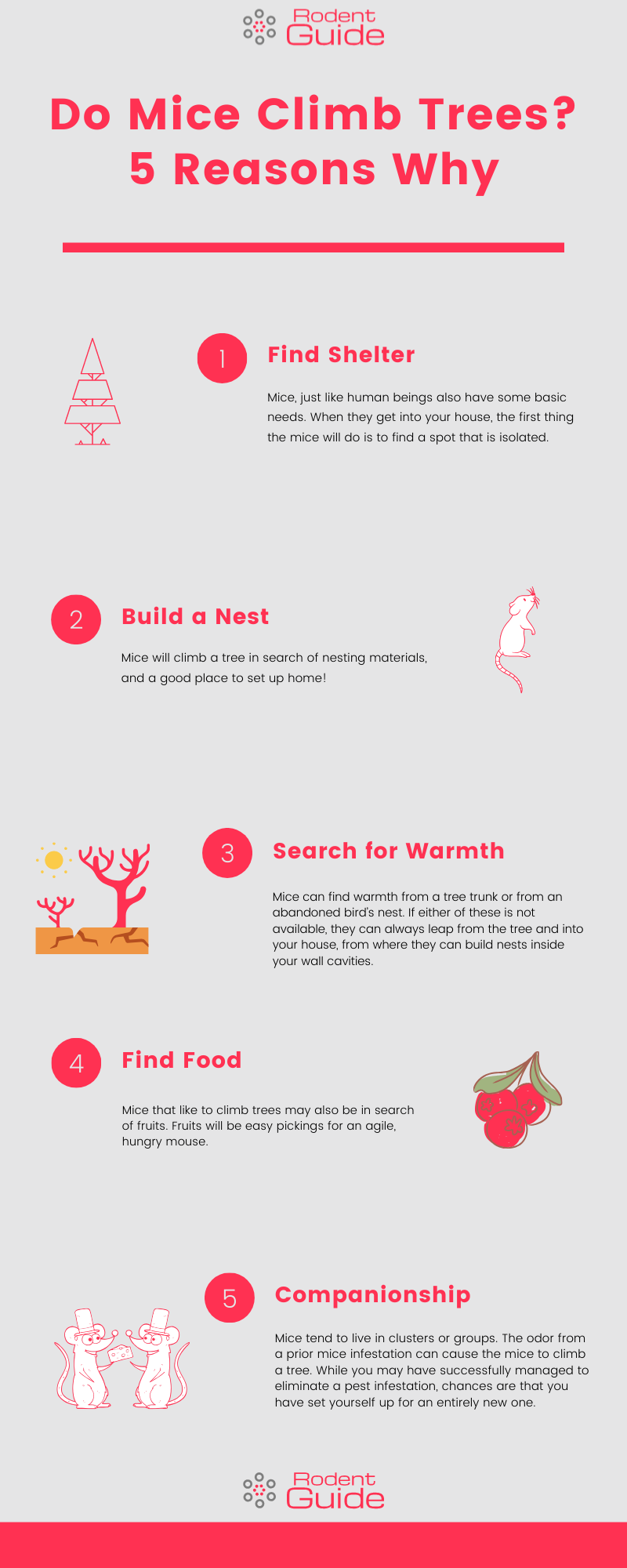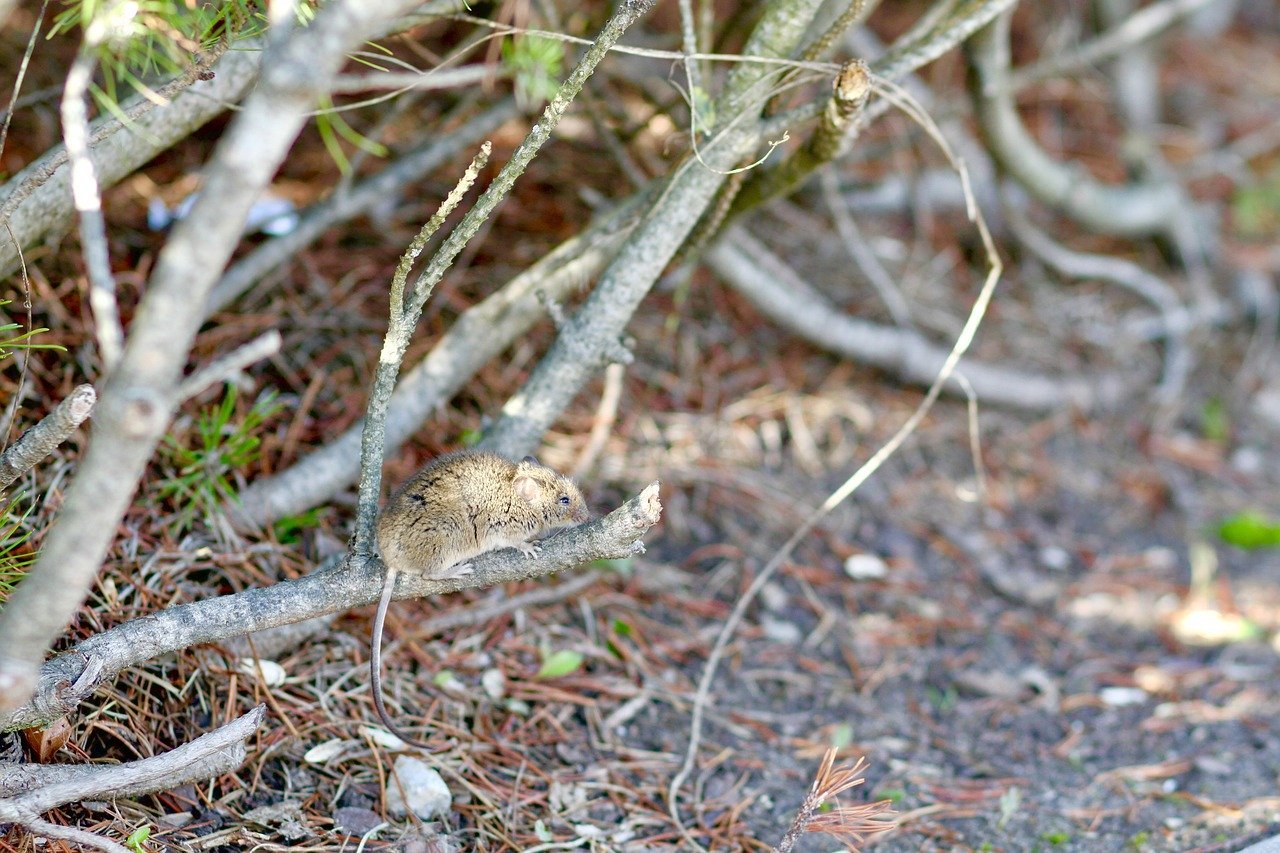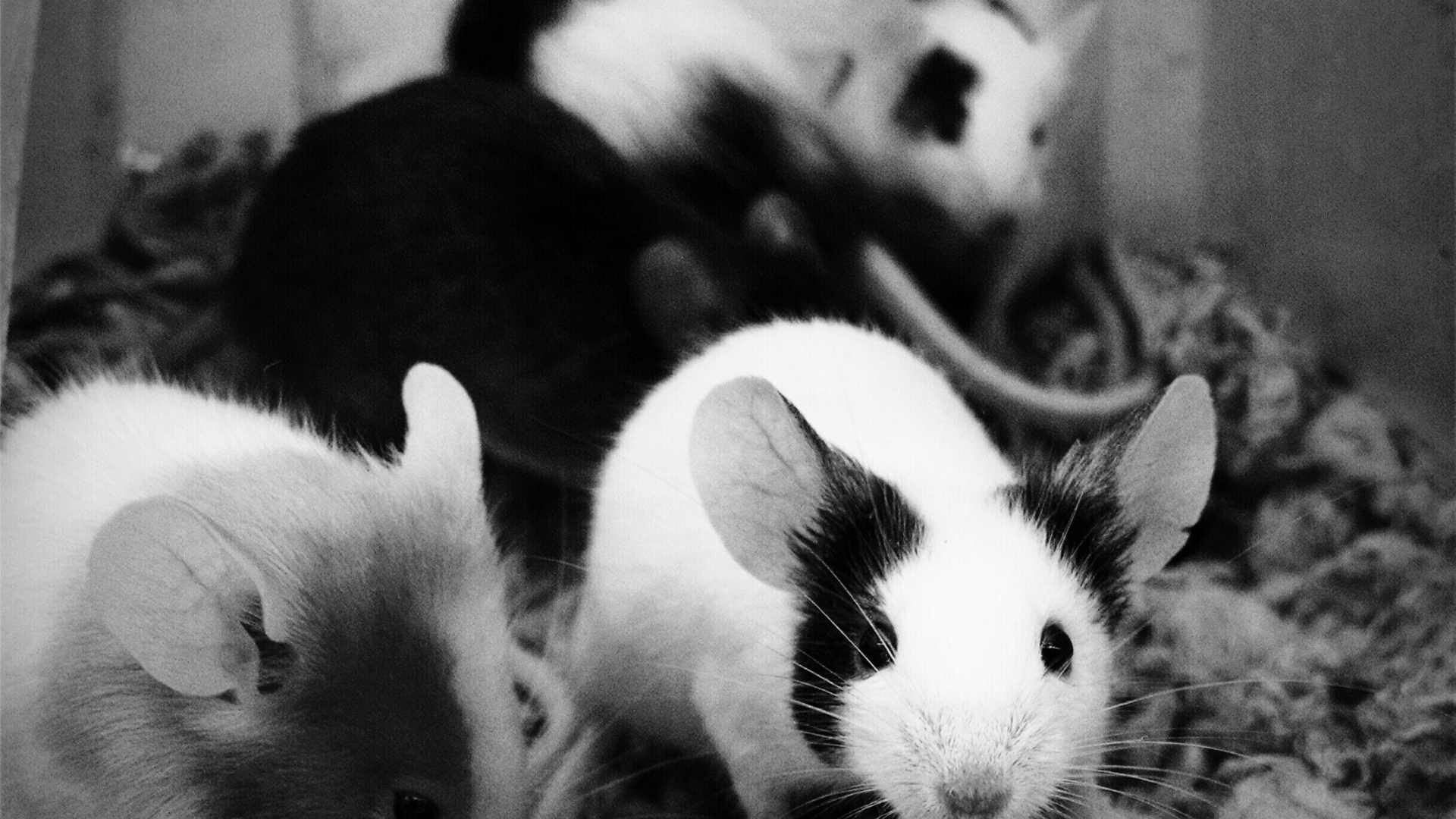Did you know that rodents typically comprise a noteworthy forty percent of all mammals in existence today?
Of this, mice make up a good percentage of the rodent family. And they tend to live in a broad array of habitats, from deserts to forests to fields and many other locations.
You may not know this, but some mice are also capable of climbing structures to find food and shelter. But can mice climb trees? In this post, we are going to take a look!
Can Mice Climb Trees?
Typically, when mice are in the wild, they prefer to stick to low ground areas where debris and other brush can provide ample shelter from predators. But, certain species of deer mice are known to reside in abandoned squirrel or bird nests, commonly found in trees.
Mice can also live inside the hollow parts of trees.
Mice tend to be quick, making it easier for them to maneuver any obstacles that they may come across easily. It’s normal for them to struggle with smooth surfaces when climbing, while rough surfaces make it easier to move easily. Bark provides the right texture required to help mice climb trees effortlessly.
Utilizing their small size and agility, mice can easily fit in holes that may be smaller than your average dime. Climbing trees makes it easier for them to gain access to nearby homes.
Overhang branches near a house provide the rodents with an opportunity to leap to your rooftop. From here, they can then make way into your attic.
Can I Stop Mice Climbing Trees?
The number one attraction for mice is food. This calls for you to ensure that all trash cans are properly covered.
If you have a dog or a cat at home, ensure that the food isn’t left in its original bag. Instead, have it transferred into a steel or dog food plastic container with its cover.
But, can you stop mice from climbing trees?
Yes, you can. You can do this by placing metal sheets around the tree trunks, which will make it harder for them to climb. Spacing the trees also works, making it hard for them to jump from one tree to the next.
Why Would a Mice Climb a Tree?

1. Find Shelter
Mice, just like human beings, also have some basic needs. When they get into your house, the first thing the mice will do is find an isolated spot. Ideally, the chosen spot will also be close to a good food source, e.g., the dining area or the kitchen.
It’s why you are likely to come across a mouse nest at the back of a refrigerator or any other appliance that you may have in your house. Such spots also tend to be quite warm.
2. Build a Nest
Mice need paper for them to build a nest. Paper, in this case, will comprise anything from magazines to newspapers that you may have stacked in a certain part of the house. Mice will climb a tree searching for nesting materials and a good place to set up a home!
Paper towels and toilet paper on business premises will also suit their nest-building needs.
3. Search for Warmth
Mice can find warmth from a tree trunk or an abandoned bird’s nest. If either of these is not available, they can always leap from the tree and into your house, from where they can build nests inside your wall cavities.
Other ideal locations in the house will include the attic, close to the hot water tank, and below the floorboards.
4. Find Food
Many people associate mice with food items such as cheese. But did you know that peanut butter and chocolate appeal to mice?
Mice that like to climb trees may also be in search of fruits.
5. Companionship
Mice tend to live in clusters or groups. The odor from a prior mice infestation can cause the mice to climb a tree. While you may have successfully managed to eliminate a pest infestation, the chances are that you have set yourself up for an entirely new one.
Prior mice infestation odor often proves attractive to other mice in search of shelter.
Trees Near Your Home Offer a Route into Your Home
Mice are extremely agile. Their small frame means that they are quick and flexible. This also means that they can easily move from one branch to another and jump from a tree branch to your rooftop or TV aerials.
When you allow trees to grow too close to your home, you are making it easier for them to find their way into your home.
The solution is simple: space your trees. If they are already planted, conduct regular pruning exercises to ensure no branches are touching or close to your house.
Frequently Asked Questions

Should I cut down a tree near my home?
You don’t necessarily have to resort to extreme measures, such as cutting down your tree. You can always try pruning as mentioned above or consider installing rat guards on the trunks. However, rat guards should only be applied after you have already trimmed or pruned the tree.
Which trees can a mouse climb?
A mouse can climb any tree that has a good rough texture. Trees with barks are a favorite, as they make it easier for the mice to use their long tails and claws to climb and swing from branch to branch.
Will mice eat the fruits from a tree?
Mice and rats are known to feed on fruits, including figs, oranges, lemon, peaches, and avocados. They are also fond of almonds and walnuts, so they love to climb fruit trees.
Conclusion
Can mice climb trees? In this post, I have answered that exact question!
Spacing your trees during the planting season and keeping the branches trimmed will help prevent the mice from climbing.
If you are worried that they may eventually find their way into your house, consider sealing all the exterior holes.
Sealing mice entry points is one of the most important steps in mouse control, and it is a job that you need to do very well.
You may know that mice carry some very nasty diseases, so keeping them away from your home is an awesome idea!
Good luck!








